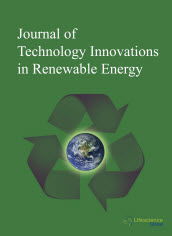jtire
|
|
|
Abstract: Medium-term generation scheduling is an important component of power systems operation and management. The traditional problem statement aimed at reducing the total production cost can hardly correspond to the market environment. The paper considers specific features of the problem statement for a wholesale electricity market environment. An approach is suggested to solve the problem on the basis of bi-level optimization models. Such models take into account possible distortion of economic and technical parameters of generating units. The proposed technique obtains equilibrium of the generation company’s interests to simulate the competitive behavior under the oligopoly electricity market. A mathematical statement of the problem supposes the application of a dynamic programming method. An algorithm for the stochastic dynamic programming application is developed. A numerical example is presented to demonstrate the applicability of the method and algorithm. The efficiency of the proposed approach is shown in comparison with the traditional generation scheduling technique. Keywords: Power system management; medium-term scheduling; market environment; bi-level approach; dynamic programming.Download Full Article |
|
|
|
Abstract: The energy security issue has been paid close attention by many countries owing to the rising energy demand, the limited energy reserve, and the climate change problem. In spite of the broad concern, there is no globally accepted definition of energy security because, for any country, the impact of energy insecurity is highly correlated with its economic status, its resource endowment, its geopolitical partnership, as well as many other nation-specific features. Therefore, by using some of the world's largest energy consuming nations as examples, this article reviews the definitions of energy security and discusses the strategies to enhance it, in order to provide insight for policy makers from different countries. The results find that major energy consuming countries take measures to improve energy security status primarily by improving energy self-sufficiency and increasing energy diversification. Besides, this study also provides suggestion for different countries to take part in international energy cooperation in order to achieve a Pareto improvement of their energy security statuses. Keywords: Energy security, energy consuming country, international energy cooperation. Download Full Article |
|
|
|
Abstract: Spent bleaching clays (SBCs) from vegetable oil refineries are industrial wastes. The clays contain large amount of oils (20-25%), which are good feedstock for biodiesels. Non-thermal in situ trans-methylation and trans-ethylation of oils in the SBC from rice bran oil (RBO), crude palm oil (CPO) and palm kernel oil (PKO) are rapid and can be accomplished in minutes with an alkaline catalyst. Thus, the process may possibly be used for large scale preparation of ethyl biodiesel. Keywords: Biodiesel, ethyl ester, methyl ester, palm kernel oil, palm oil, rice bran oil, spent bleaching clay.Download Full Article |
|
|
|
Abstract: H2 is gaining attention as energy vector, particularly if produced from renewable sources. Keywords: Hydrogen production, Photocatalytic water splitting, Photocatalytic reforming, Titanium dioxide. |
|
|
|
Abstract: The working efficiency of dye-sensitized solar cells (DSCs) depends on the long-term stability of the dye itself and on the microscopic structure of the dye-semiconductor interface. Previous experimental studies of DSCs based on ruthenium dye with bipyridine ligands (N719) adsorbed to the TiO2substrate applied FTIR,un-polarized Raman (RS) and un-polarized resonance Raman (RRS) spectroscopy. In the un-polarized RRS studies of N719/TiO2 – DSCs the discussion of the adsorption of N719 was based on the rather weak carbonyl or carboxyl group stretching vibrations and on minor spectral changes of overlapping Raman modes, whereas conclusions about the dye-stability was based on the observation that fresh and aged DSCs had almost identical RRS spectra. In the present paper we address the problems mentioned above, by utilizing the unique property of Raman scattering that the polarization of the scattered light is generally different from the polarization of the laser light. When the excitation is chosen within the visible absorption band of N719 only the skeleton ring-modes in N719 are enhanced and are observed as the most intense bands in the RRS spectra. We demonstrate by experimental results on N719/TiO2 – DSCs that by combining an analysis of the wave number dependent polarization of these modes with the small shifts observed in the visible absorption spectra of adsorbed, non-adsorbed molecules and degradation products new and more reliable information about dye stability and about the adsorption of the dye on TiO2 can be obtained. Furthermore it is found that the polarization fluorescence anisotropy is very different for adsorbed and non-adsorbed dye molecules. This information is automatically obtained when processing the Raman data. The conclusion is that if the polarization properties of the resonance Raman spectra are analyzed instead of just analyzing the minute spectral changes of the (weaker) Raman bands the potential of RRS as an on-site tool for investigation of DSCs can be greatly improved. Keywords: Dye sensitized solar cell, Polarized Raman, polarized Fluorescence.Download Full Article |




